Edwards EXT255H turbo molecular pump controller
Background
I have recently taken an interest in high-vacuum systems. A TMP is the bridge between the relatively soft-vacuums produced by traditional mechanical pumping systems and the high-vacuum world or electron guns that I am interested in exploring. The TMP is similar to a jet engine in construction, with layers of titanium blades that are used to push any remaining air molecules out of its exhaust port once a ‘rough’ vacuum has been established by a mechanical pump. In a rough vacuum, the TMP rotates at around 60k RPM. New, these units are eye-wateringly expensive.
This document outlines some of the key decisions that were taken associated with the design and construction of a fully integrated TMP controller, as well as some of the trials and tribulations along the way. The unit implements a contemporary BLDC power controller, along with power supplies, touch-screen, and switched power outlets. This whole unit is microprocessor controlled.
Due-diligence and Purchase
Two Edwards-BOC EXT255H turbo-molecular pumps appeared on the NZ online auction house Trademe at the right price, but without controllers; a very tasty morsel indeed.
Before the pumps were purchased, a reasonable effort had to be made to confirm that available documentation would be sufficient to allow the units to be pressed into service with the aid of a home-built controller.

Schematic of the EXT255H turbo-pump
The only useful documentation available about the pump appeared to be published in the user-manual for the EXC100E turbo-molecular pump controller. Even this information was sparse. Each signal for the pump had a very brief description. The only component which remains a mystery is the thermistor on the RHS which is in the order of 100 ohms, PTC. This part may be for temperature measurement, since it is connected to the low current instrumentation bus, however, a 10k NTC part referenced to earth would make much more sense for such duty.
As advertised, the units appeared to be in good condition, the seller a very nice, and as it turn out, extremely accommodating person. Upon delivery, the rotors swung freely, and appear to be undamaged.
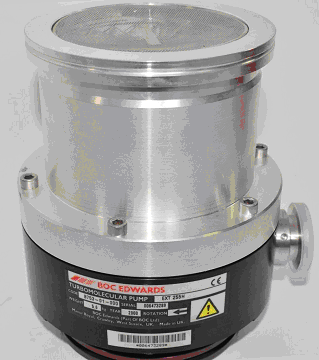
Appearance of the EXT255H turbo-pump
Electrical Connection
From available documentation, the pump appears to connect to the controller via a 19 pin round male connector mounted on the body of the unit. After considerable research it was determined that these parts were compliant with MIL-DTL-26482. Fortunately, various companies manufacture parts compliant with this specification, but not to the full MIL spec, so a lot less expensive. Two Amphenol PT06E14-19S mating connectors were purchased via eBay for NZ$105 landed. Upon inspection, the received parts were actually ‘new old stock’, not ‘used’ as advertised, and given that all of the electrical connections are heavily gold plated, this was of no consequence.
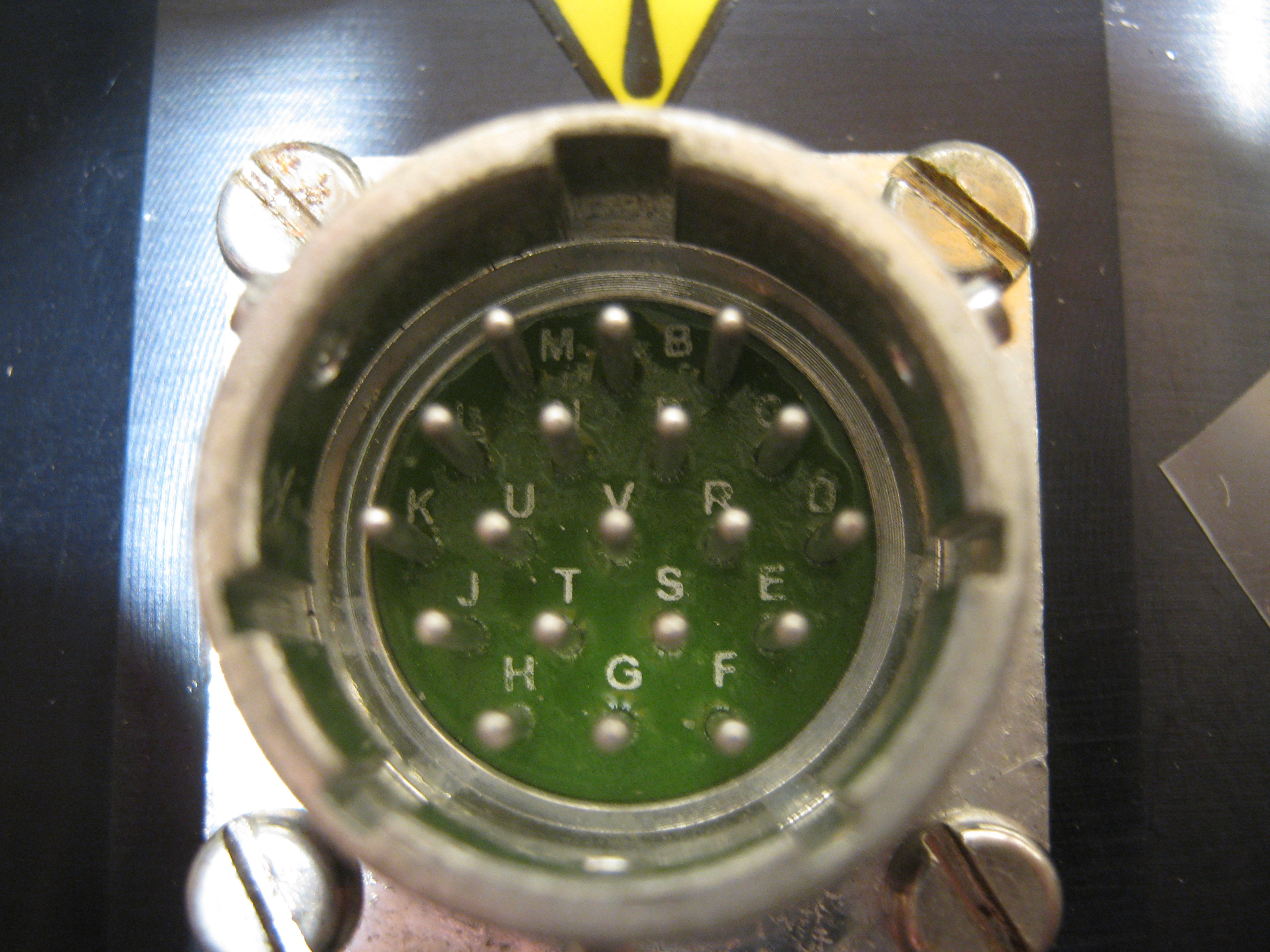
MIL-DTL-26482 compatible, 19 pin male within type 14 shell
Motor Control, and Power Driver
The pump appeared to use a 3-phase BLDC motor, with Hall sensors mounted every 120o. It is unclear what the required bus-voltage is to drive the motor, but phase-to-phase resistance is around 0.7Ω; this certainly indicates a low voltage unit, possibly 12 or 24V. As the rotor starts moving, back EMF will offset applied motive force, dropping drive-current.
In an ideal world, the rotor could be spun up to full speed using an external motor. It would then be possible to ascertain required bus-voltage for the pump, but there are quite a few issues trying to get a unit with a fan-assembly up to 60k RPM in a vacuum.
Given that the unit may be air or water-cooled, it is reasonable to assume full speed power consumption in the region of 200W. Initial tests will be made using a 24V/30A telco power supply, this implies that each leg will require around 3A.
First part of the project is to build a prototype controller. Initial choice of power interface...
Read more » Mark Atherton
Mark Atherton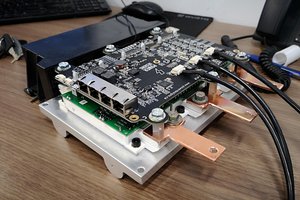
 Marcos
Marcos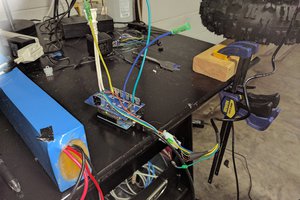
 nerd.king
nerd.king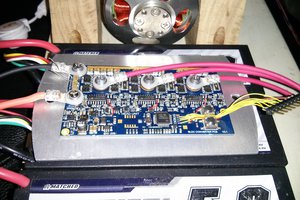
 Jarrod
Jarrod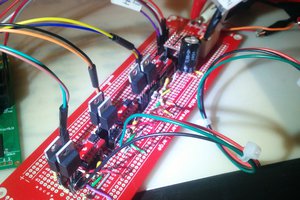
 ridonkulus
ridonkulus